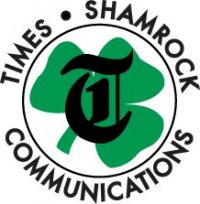Little Village, Motif Magazine, and Wisconsin Gazette are voted in as new members. Salt Lake City is chosen as the site of the 2015 Annual Convention.
Don Farley, group publisher of the Times-Shamrock Alternative Newsweekly Group and publisher of Baltimore City Paper, has accepted a promotion as the new Regional General Manager of Times-Shamrock's daily operations.
Burlington, Vt.-based Seven Days has announced the purchase of Kids VT, a monthly parenting publication.
Baltimore City Paper, Metro Times, Orlando Weekly and the San Antonio Current are as of today exclusively represented by Ruxton for national print advertising, according to a press release. The papers will join their newly-acquired sister paper, the Cleveland Scene, as part of the advertising network owned and operated by Village Voice Media. VVM chief operating officer Scott Tobias says the discussions about joining Ruxton began while VVM and Times-Shamrock were negotiating the sale of the Scene earlier this year. The addition of the four papers means Ruxton has a print presence in 50 American cities, including all of the top 20 markets, with a total weekly print circulation of more than 3.6 million.
The other shoe has dropped. Times-Shamrock just announced that it is buying Cleveland Free Times as well as the Cleveland Scene, and will merge the two publications into a single paper on July 23. The new paper will be called the Scene, and current Free Times publisher Matt Fabyan will run it. "This is a great addition to our existing group of alternative newsweeklies," says Don Farley, group publisher of Times-Shamrock's stable of alt-weeklies, which now numbers five. "We look forward to serving the greater Cleveland community for many, many years." UPDATE: Fabyan tells the Plain-Dealer that the deal had "been in the works for a while," and Crain's Cleveland Business reports that staffers at each paper are being asked to reapply to the new paper.
That seems to be the opinion of Ed Avis, who looks at the challenges alt-weekly owners are facing in a piece for Quill, a magazine published by the Society for Professional Journalists. Not surprisingly, he says the biggest challenge to the business is the internet. He talks to the Austin Chronicle's Louis Black, Creative Loafing's Ben Eason, and Times Shamrock's Don Farley to see where they are at in relation to the internet, and, more importantly, where they're trying to go. Ultimately, Avis thinks that the challenge of the online market -- in concert with the aging of the original alt-weekly founders -- is what's behind the industry's increased consolidation. Northwestern University professor and Academy for Alternative Journalism director Charles Whitaker agrees. "I think the (older owners) have had difficulty adjusting and figuring out the new media landscape, particularly the internet and things like Craigslist," he says. "At the same time, a group of new owners said, 'We can do this as a chain. We still have our alternative press sensibilities, but by pooling our resources we can run these papers more efficiently than they had been run in the past.'"
At a recent American Press Institute seminar on "MediaPreneurship," Don Farley, publisher of Baltimore City Paper, and Brad Moore, general manager of the commuter daily RedEye, shared their insights on creating a successful "alternative" print product. (A summary is posted on API's Web site.) Among other things, Farley suggests that it is more important to hire passionate employees than experienced employees, and that change should be viewed as opportunity. Most tellingly, Farley says that "if you have to try to be edgy, you're not edgy"; meanwhile, Moore recounts how prior to the launch of RedEye, staffers identified words they "wanted people to identify with [the] new product, including 'savvy,' 'edgy,' and 'engaged.'"
Don Wanagas, a regular writer for AAN member paper NOW Magazine in Toronto, announced in December that he would become media relations director for Mayor David Miller's re-election campaign. "After all my time as a journalist, I thought it was time to see what the other side is about," Wanagas told The Globe and Mail.









